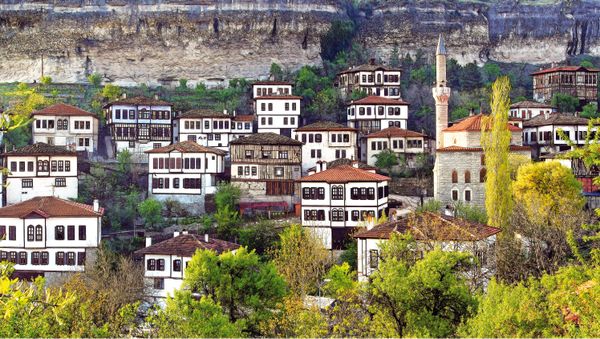Türkiye is highlighting its Black Sea region as an alternative summer destination, offering visitors cooler temperatures, green highlands, and a mix of UNESCO-listed heritage and local traditions far from the country’s more crowded tourist hotspots.
The region stretches along the northern coast, combining mountainous landscapes with historic towns and distinctive cuisine. Tourism officials are promoting three key experiences for visitors.
Cultural and natural highlights in the west
Bolu’s Yedigöller National Park and the slow-paced towns of Göynük and Mudurnu provide a gateway from İstanbul. In Karabük, Safranbolu – both a UNESCO World Heritage Site and Cittaslow town – is known for its timber-framed Ottoman houses. Kastamonu’s Mahmut Bey Mosque, part of the UNESCO-listed Wooden Hypostyle Mosques of Mediaeval Anatolia, sits alongside Daday’s rural calm.
Further east, Sinop, the region’s only natural port, offers views from İnceburun, Türkiye’s northernmost point, and cultural sites including Sinop Castle. Samsun, where the War of Independence began, features the Bandırma Ferry replica and the Kızılırmak Delta Bird Sanctuary, on UNESCO’s tentative list since 2016.
Eastern highlands and ancient legends
Eastern provinces such as Ordu and Giresun, named in Lonely Planet’s “Best in Travel 2025,” are known for highlands including Çambaşı, Perşembe and Keyfalan, as well as Cape Jason, linked to the Greek myth of Jason and the Argonauts. Giresun’s Kümbet, Bektaş and Sis Mountain highlands offer striking views, while Kuşköy village preserves a rare whistled language recognised by UNESCO.
Trabzon is home to the UNESCO-listed Sümela Monastery and medieval fortifications, alongside serene uplands like Maçka-Şolma and Karester. In Rize, tea plantations surround Ayder Highland and Zil Castle, with white-water rafting available on the Fırtına Creek. Artvin’s Kaçkar and Kafkasör highlands, the Cittaslow town of Şavşat and the Camili Biosphere Reserve – part of UNESCO’s Man and the Biosphere Programme – mark the eastern end of the route.
Regional flavours
Local cuisine features dishes such as kuymak, made with corn flour, butter and regional cheese, collard greens, and anchovies (hamsi). Rize tea is widely served, while seasonal visitors can join the harvest. Other specialities include Ordu and Giresun hazelnuts, Samsun’s pide, Safranbolu’s lokum and Trabzon’s Hamsiköy rice pudding.
Tourism officials say the Black Sea’s combination of highland retreats, historic sites and distinctive gastronomy make it well-suited to travellers seeking a slower-paced, nature-led trip. More information is available at goturkiye.com.


